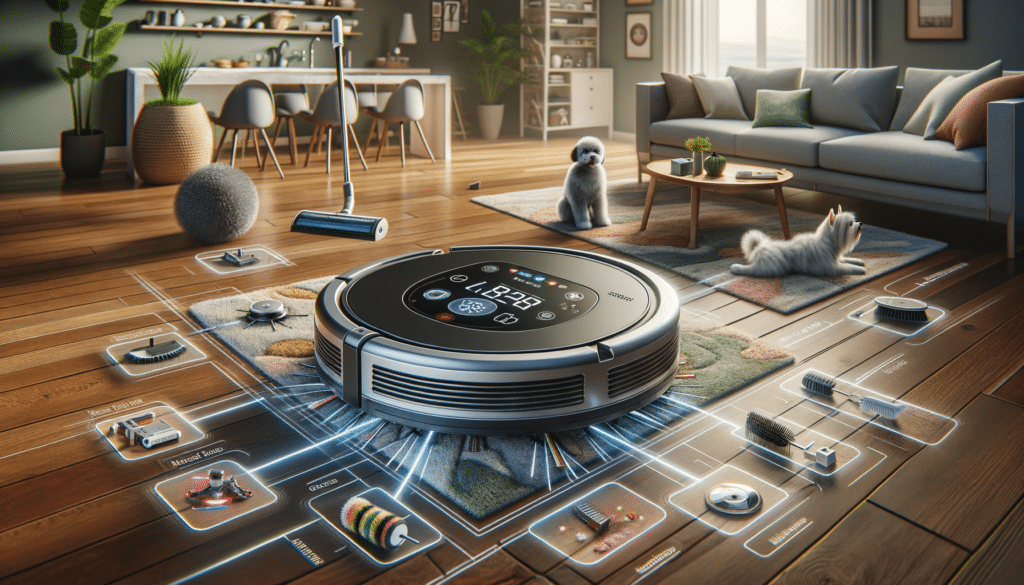How Robot Vacuums Work
Robot vacuums are marvels of modern technology, designed to autonomously clean floors with minimal human intervention. These devices are equipped with a combination of sensors, brushes, and vacuums to effectively navigate and clean different surfaces. The core of a robot vacuum’s operation is its navigation system, which uses sensors to detect obstacles, stairs, and dirt. These sensors can include infrared, laser, or camera-based technologies that help the vacuum map out the room and avoid collisions.
Most robot vacuums follow a systematic cleaning pattern, ensuring that they cover the entire floor area. They are programmed to return to their charging dock when the battery is low, ensuring they are always ready for the next cleaning session. Some advanced models even have mapping capabilities, allowing them to remember the layout of your home for more efficient cleaning.
The vacuum’s cleaning mechanism typically involves rotating brushes that sweep debris into the suction path, where it is collected in a dustbin. This process is complemented by filters that trap fine dust and allergens, making robot vacuums suitable for maintaining a healthy indoor environment. Understanding how these devices work can help users make informed decisions when choosing a model that fits their specific needs.
Choosing an Automatic Vacuum Cleaner
Selecting the right robot vacuum involves considering various factors that align with your cleaning needs and lifestyle. Start by assessing the size and layout of your home. Larger homes may benefit from a vacuum with a longer battery life and larger dustbin capacity to minimize interruptions during cleaning. Additionally, consider the type of flooring in your home, as some vacuums perform better on carpets, while others excel on hardwood or tile floors.
Another important aspect is the vacuum’s navigation system. Models with advanced mapping capabilities can efficiently clean complex layouts, while basic models might be more suitable for simpler floor plans. If you have pets, look for vacuums with specialized brushes and powerful suction to effectively capture pet hair and dander.
Connectivity and smart features are also worth considering. Many modern robot vacuums offer app control, allowing you to schedule cleanings, monitor progress, and receive notifications. Voice control compatibility with smart home systems can further enhance convenience. By evaluating these features, you can choose a robot vacuum that integrates seamlessly into your daily routine.
Robot Vacuum Features to Compare
When comparing robot vacuums, it’s essential to focus on features that directly impact performance and user experience. Suction power is a critical factor, as it determines the vacuum’s ability to pick up debris. Look for models with adjustable suction settings to cater to different floor types and cleaning needs.
Dustbin capacity is another vital consideration. A larger dustbin means fewer interruptions for emptying, which is particularly beneficial for larger homes or those with pets. Additionally, examine the type and quality of filters used. HEPA filters are highly effective at trapping allergens and are recommended for households with allergy sufferers.
Navigation technology is a key differentiator among robot vacuums. Some models use basic bump-and-run navigation, while others employ sophisticated mapping systems for efficient cleaning. Consider whether the vacuum can create and store maps of your home, as this feature can significantly enhance cleaning efficiency.
Finally, assess the availability of smart features such as app control, voice commands, and scheduling options. These features can greatly enhance convenience and allow for more personalized cleaning routines. By comparing these aspects, you can identify a robot vacuum that offers the right balance of performance, convenience, and value.


